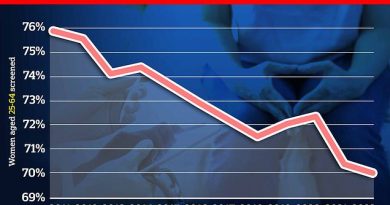Study suggests Vitamin D prescription lowers hip fracture incidence
In a recent study published in Scientific Reports, researchers examined the relationship between vitamin D supplementation and osteoporosis-related fracture (vertebral, radial, and hip) incidence using osteoporotic population information retrieved from the National Database of Health Insurance Claims and Specific Health Checkups (NDB) of Japan.

Background
Osteoporosis, a chronic musculoskeletal condition, damages bone tissues and increases fracture risk. The osteoporotic population and consequent fractures are predicted to rise as the world's population ages. Fragility fractures are common among osteoporosis patients. In the elderly, fractures are connected with disability, worse life quality, and a greater refractures risk.
Treatment for osteoporosis is critical to preventing fractures among older individuals. Vitamin D has been used as a medication for osteoporosis, and it has been reported that active forms of vitamin D increase bone mineral density (BMD).
Vitamin supplementation has been shown to lower vertebral and nonvertebral fracture risks, enhance bone mass, and improve calcium regulation. However, data on the effects of active metabolites of the vitamin on preventing hip fractures are limited.
About the study
In the present study, researchers evaluated the effects of vitamin D supplementation on fracture prevention using NDB data between March 2012 and March 2019.
The team analyzed data from osteoporotic individuals aged over 40 who had not received vitamin D within six months before study initiation. Individuals were excluded from the analysis if they received non-osteoporosis medications a minimum of once during the study period (between study initiation and three years following inception) or if they received medications for greater than 90 days.
In addition, individuals who developed osteoporosis-associated fractures at study initiation or within three months were excluded. Individuals were enrolled between September 2012 and March 2016.
Among the participants, 422,454 untreated individuals had never received vitamin D in the follow-up period, and 169,774 treated ones had a medication possession ratio (MPR) of ≥ 0.50 for vitamin D at all time points. Propensity score matching (PSM) yielded 105,041 case-control pairs.
Cox regression modeling was performed by adjusting for covariates such as age, residence, sex, medications consumed before study initiation, and new-onset fractures before study initiation. In addition, Cox proportional hazards models were used, and the hazard ratios (HRs) were calculated. Medication adherence was quantified using MPR values.
A subgroup analysis was performed by stratifying participants based on the type of vitamin D prescribed, including alfacalcidol (ALF; 16,656 individuals), calcitriol (CAL; 962 individuals), and eldecalcitol (ELD; 86,494 individuals) individually or in combination (mix group; 929 individuals).
Results
Of the 725,379 initially identified individuals, 4,450 individuals were excluded due to fracture development within three months of study initiation were excluded, and therefore, 720,929 individuals were analyzed.
In comparison to untreated individuals, treated individuals were significantly older, predominantly male, consumed other osteoporosis medications [such as parathyroid hormone (PTH), bisphosphonates (BPs), selective estrogen receptor modulators (SERMs), and menatetrenone] in lower amounts before enrollment, and developed more vertebral and hip fractures before enrollment.
At follow-up, a total of 26,845 untreated individuals developed fractures, including 4,008 hip, 20,197 vertebral, and 2,640 radial fractures. The numbers of corresponding fractures among treated individuals were 687, 6,730 and 981, respectively. Fracture incidence was significantly lower among PS-matched treated individuals compared to controls [6.3% (6,562 cases) versus 5.7% (5,974 cases), HR, 0.9].
By location, hip fractures were significantly reduced (0.9% versus 0.4%), but not radial and vertebral fractures. The site-specific incidence rates, before and after vitamin D treatment, were: radial fractures – 0.6% (672 individuals) versus 0.6% (650 individuals); hip fractures – 0.9% (938 individuals) versus 0.4% (441 individuals); and vertebral fractures – 4.7% (4,952 individuals) versus 4.7% (4,883 individuals).
By vitamin D type, the team observed a significantly lower fracture incidence for alfacalcidol alone (ALF, HR, 0.7). The incidence rates for fractures were 4.7% (n=788), 5.6% (n=54), 5.9% (n=5,079), 5.7% (n=53), and 6.3% (n=6,562) in the alfacalcidol, calcitriol, eldecalcitol, mix, and control groups, respectively. ELD and ALF recipients showed significantly lower fracture incidences than controls, and ALF recipients showed significantly lower fracture rates than ELD recipients.
Overall, the study findings showed that vitamin D supplementation lowered hip fracture incidence, in line with previous studies.
Future studies must include confounding factors such as comorbidities, daily living activities, physical exercise, body mass index, dietary habits, living situation, and socioeconomic status and explore the causal association between vitamin D supplementation and lowering fracture incidence.
- Yakabe M, Hosoi T, Matsumoto S, et al. (2023). Prescription of vitamin D was associated with a lower incidence of hip fractures. Scientific Reports, 13, 12889. doi: /10.1038/s41598-023-40259-6. https://www.nature.com/articles/s41598-023-40259-6
Posted in: Medical Research News | Medical Condition News | Pharmaceutical News
Tags: Body Mass Index, Bone, Bone Mineral Density, Calcitriol, Calcium, Chronic, Disability, Estrogen, Exercise, Fracture, Health Insurance, Hip Fracture, Hormone, Medication Adherence, Metabolites, Musculoskeletal, Osteoporosis, Receptor, Vitamin D

Written by
Pooja Toshniwal Paharia
Dr. based clinical-radiological diagnosis and management of oral lesions and conditions and associated maxillofacial disorders.



